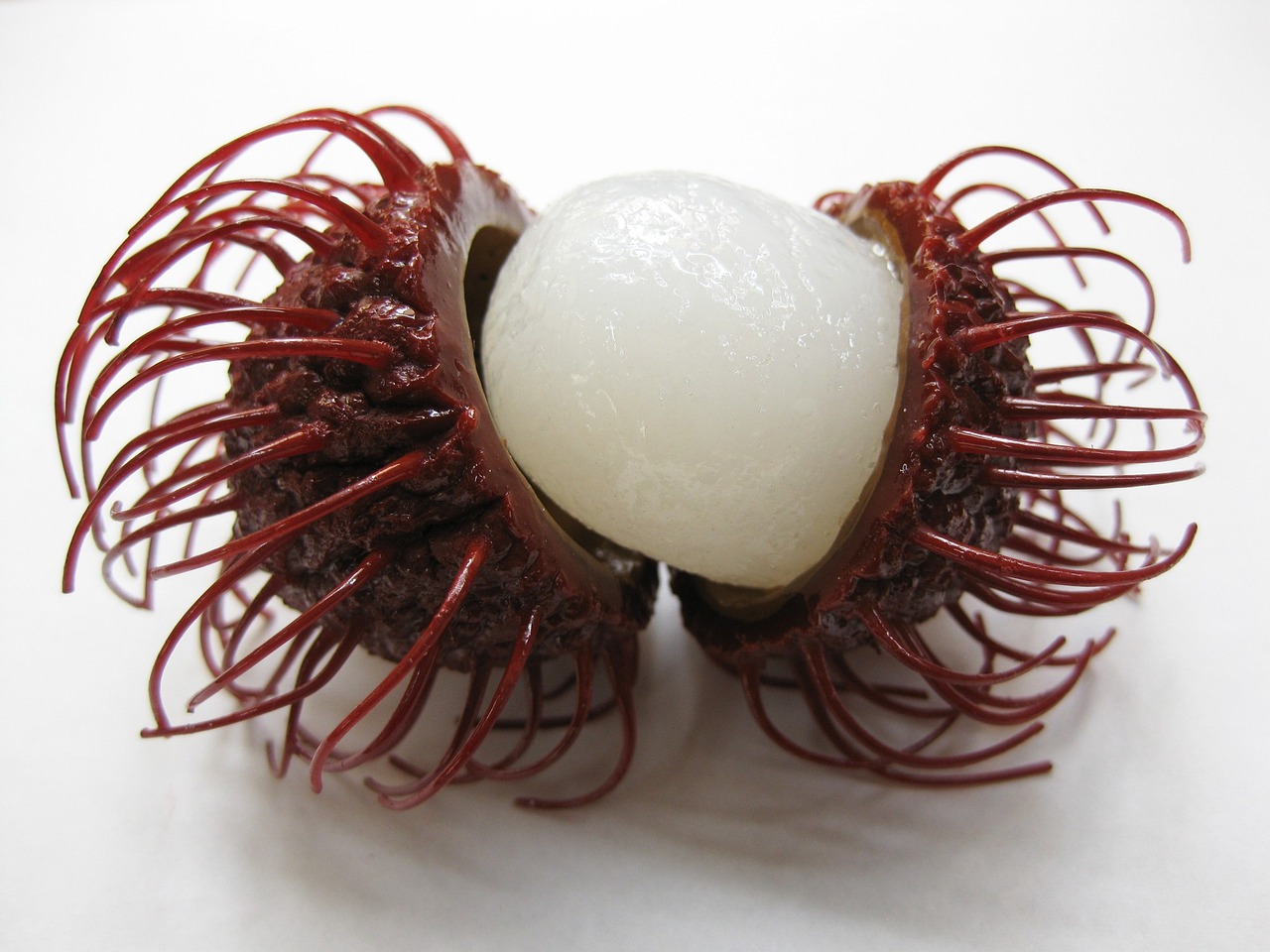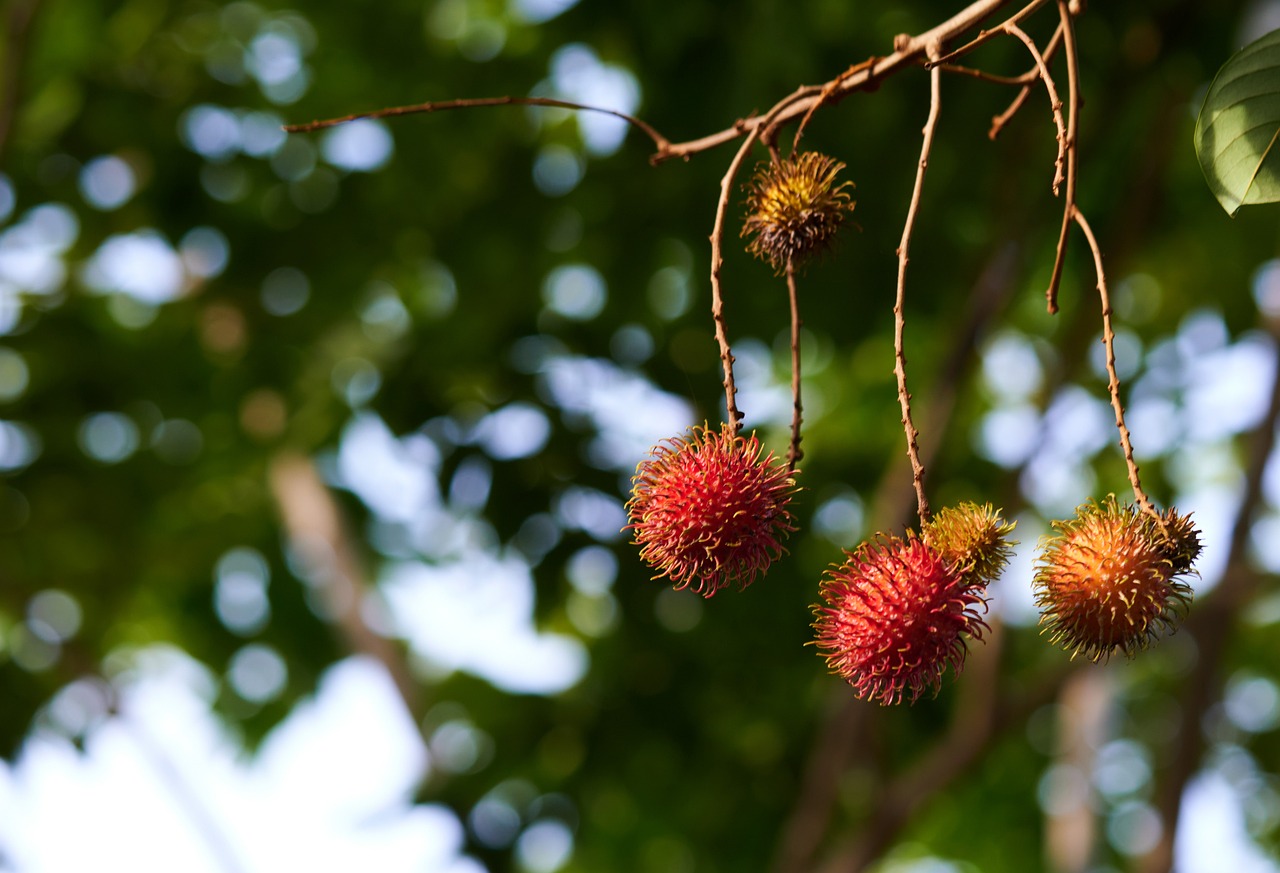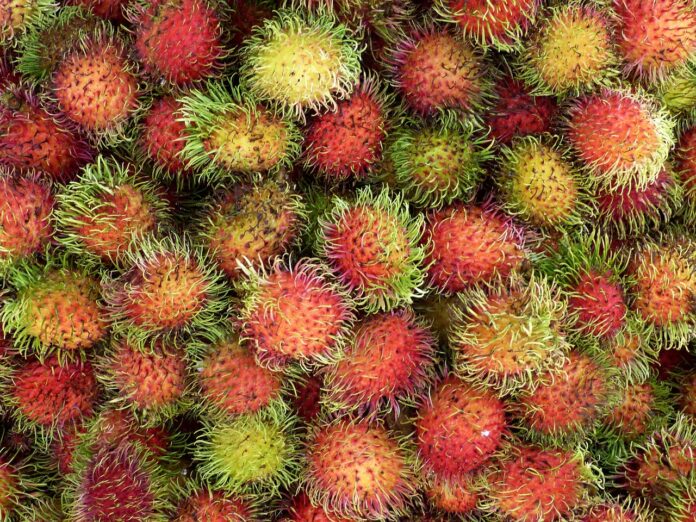Among the vast variety of tropical fruits, rambutan stands out for its amazing taste. This fruit is undoubtedly worth attention. What is rambutan, and what properties does it have?
Rambutan is an exotic fruit that grows on tropical trees reaching a height of 20-25 meters. These evergreen fruit trees belong to the Sapindaceae family. They originated from Southeast Asia, with Malaysia, Thailand, and Indonesia traditionally being considered their homeland.
Today, rambutan grows in most countries located in the tropical belt, including Australia, Central America, Africa, and the Caribbean islands. Residents of East Asia consider the tree sacred.
The fruits grow in large clusters of 25-30 pieces. The fruit is round, with a diameter of 3-6 cm. Rambutan has a thin but dense skin, densely covered with thin hairs with hooked tips (in Indonesian, “rambut” means “hair”).
In appearance, rambutan resembles a chestnut, but its hairs are soft and not prickly. The color of the fruit changes as it ripens, from green to yellow-orange and then bright red when fully ripe. The flesh of the fruit has a jelly-like consistency.
It is very juicy, with a bright taste that resembles solidified sugar water, but it is moderately sweet without being cloying. Inside the flesh is a seed. Rambutan’s taste is hard to compare with any known fruit, but it can be described as a cross between kiwi and grapes.
How to Eat Rambutan
The fruit’s skin is easily cut with a knife and separates well from the flesh. The cut should be made around the diameter. For convenience, one half of the skin is removed, and the other is left, making it easier to hold the fruit while eating. Rambutan should be eaten carefully to avoid biting into the seed, which is bitter and inedible when raw.
Rambutan can be eaten on its own or used in cooking. The fruits can be added to fruit salads. They also go well with seafood and chicken, giving dishes an original, spicy flavor. Rambutan is used to make jams, preserves, and sweet drinks.
The jams and preserves can be used as fillings for pastries. Canned fruits are added to cocktails. As a standalone dessert, the fruits are served chilled on ice.
Nutritional Benefits of Rambutan
Rambutan has a unique composition that provides a range of health benefits. In 100 grams of the product, there are:
- Carbohydrates: 20 g
- Proteins: 0.65 g
- Fats: 0.2 g
- Fiber: 0.9 g
- Ash: 0.2 g
- Water: 78 g
- Vitamins: A, B1, B2, PP, B5, B6, folic acid, C
- Minerals: potassium, calcium, magnesium, sodium, iron, phosphorus, copper, manganese, zinc
- Niacin
- Antioxidants
The fruit contains organic acids with antioxidant activity, including caffeic, ellagic, syringic, coumaric, and gallic acids.
In Asia, there is a saying: “Eating even one rambutan extends your life.” The beneficial properties of this fruit are well-studied by modern medicine. It is widely used in both traditional and folk medicine, as well as in cosmetology.
A rambutan decoction is especially beneficial for women after childbirth. For headaches, it is recommended to apply compresses soaked in a decoction of the tree’s leaves to the temples.
12 Health Benefits of Rambutan
The health benefits of rambutan include:
- Improving digestion
- Being a dietary product included in weight loss diets (82 kcal per 100 g)
- Possessing anti-inflammatory properties
- Combating intestinal worm infestations
- Fighting anemia due to its iron content
- Reducing blood pressure thanks to niacin
- Slowing down aging processes in the body
- Promoting rapid elimination of harmful cholesterol
- Strengthening blood vessels and aiding in blood clotting
- Fighting infections of various origins
- Positively affecting brain activity and nervous system function when consumed regularly
- Containing enough gallic acid in the skin to destroy free radicals, thereby preventing cancer. Thai people genuinely believe that eating 5 rambutans daily can eliminate the risk of cancer.
Rambutan seeds, in small quantities, can treat diabetes.
Contraindications
Despite its immense benefits, rambutan can cause allergies. Therefore, it is recommended to try it in small pieces for the first time. People with high blood pressure or diabetes should avoid overripe fruits because the sugar converts to alcohol. It is not advisable to eat more than 6 fruits a day.
How to Store Rambutan
The fruits are very delicate and cannot be stored for long. The shelf life in the refrigerator is no more than 2 days. It is recommended to consume them immediately after purchase. In canned form or as jams and preserves, the shelf life is significantly extended.
Optimal storage conditions for fresh fruits are a temperature of +6 to +8 degrees Celsius and humidity of 85-90%.
